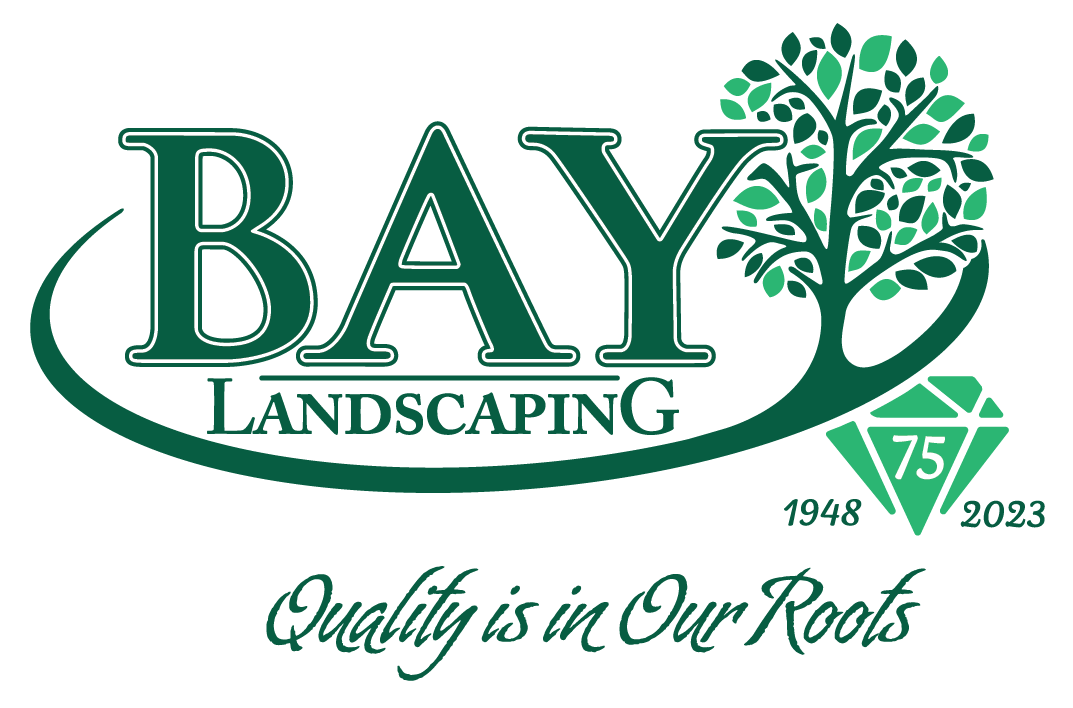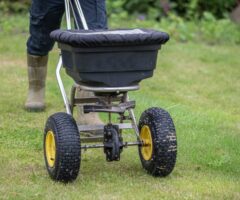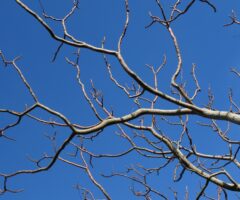Here at Bay Landscaping, we always encourage you to plant plants and trees that are suited for the Great Lakes Bay region, but what about plants that have a planting zone just outside of Michigan?
You may have heard of a method of gardening called “zone-pushing,” where homeowners and gardeners are figuring out ways to plant and grow items that don’t usually survive in our hardiness zone.
In this article, we will go over the basics of zone-pushing, hardiness zones, and how you might attempt to grow something that may not usually grow here in our area of Michigan.
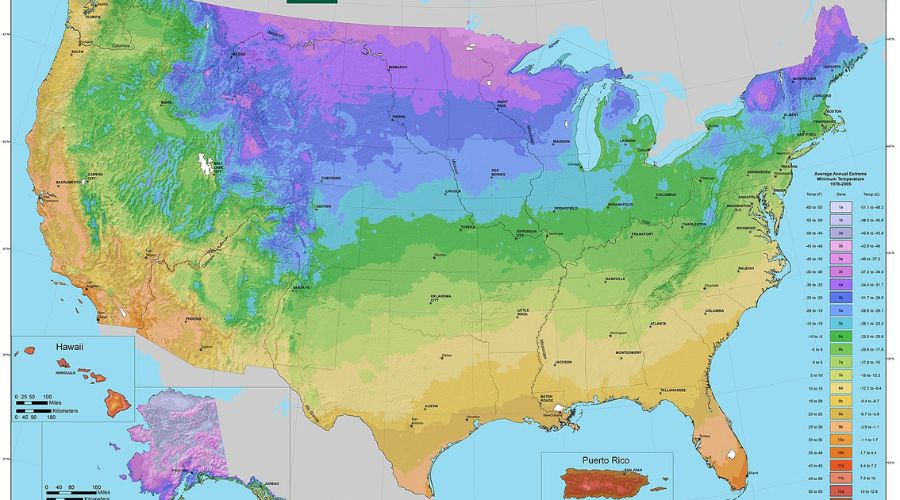
What is a Planting or a Hardiness Zone?
When referring to a planting or growing zone, most people mean the USDA Hardiness Zone, as seen in the image above. These zones are determined by the coldest temperature at which a plant can survive. For instance, planting zones throughout Michigan range from 4a through 6b. Bay Landscaping’s nursery is located in zone 6a, and the surrounding areas are mostly 5b to 6b.
The hardiness zone does not factor into how a plant will survive in the heat, however. For that, you can refer to the American Horticultural Society Heat Zone Map.
What is a Microclimate?
While the above websites give a good indication of local climate, that climate can vary between rural and urban areas. Areas with more green space tend to be cooler than areas with a lot of pavement, for example. The climate can even deviate on one property – a sunny backyard may be consistently warmer than a shady backyard.
Microclimates are differences in the climate on your property based on things such as:
- Elevation – Higher elevation usually means colder temperatures. If you have any hills or slopes, higher sections of the hill will be warmer than the lower sections.
- Shade – Note the shady and sunny areas of your yard. Is some of the shade created by deciduous trees, so the area receives more sun in the winter? Do you use any shade cloths or do any plants provide shade to other plants on your property?
- Sun exposure – What direction does your yard face? How does the sun exposure of various areas change as the seasons change? South-facing yards receive more intense sun exposure than north-facing yards. Western exposures can often be quite windy.
- Nearby structures (including fences or larger trees) – Pockets of warmer air can gather near structures. Some can also bounce light, affecting the exposure of the area.
- Wind chill – Wind can harm plants in winter faster than cold spells. How are your plants impacted by the wind?
- Humidity – Is your property near a body of water? This can change the humidity in the area, which can affect the temperature as well.
- Rainfall patterns – Where does the rain drain? Are there wet areas created from downspouts? Note the grading and runoff on your property. Which areas dry more quickly?
- Drainage – Do some sections of your yard drain more slowly? Do you have any standing water?
- Soil characteristics – Doing a soil test in various areas of your property can tell you your soil’s pH, texture, composition, nutrients, and more.
- Heat sinks – Buildings, stones, pavement, and sidewalks absorb heat that is then reflected to surrounding areas. Plants near heat sinks often suffer from drought and heat exposure.
Learn more about how to learn your yard’s microclimates in this article from PennState Extension >>
A microclimate can mean that your property, or parts of your property, can successfully grow plants from neighboring growing zones.
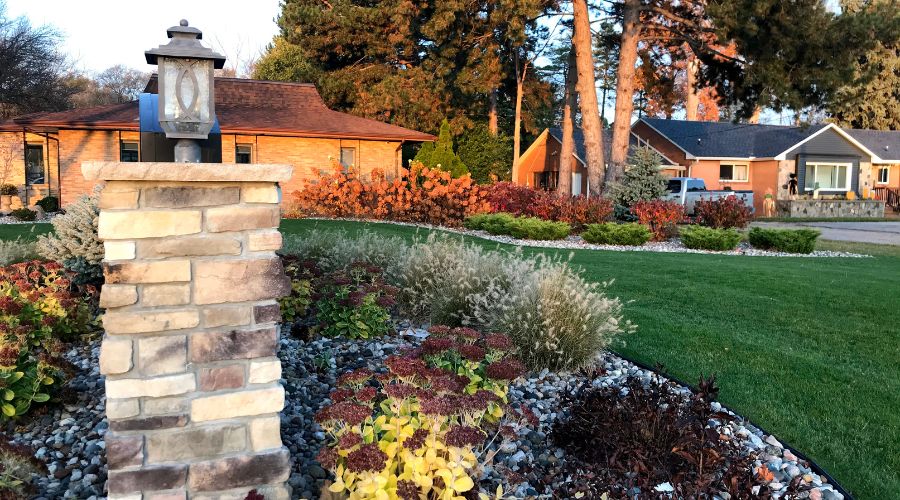
What is Zone-Pushing?
Zone-pushing is attempting to plant and grow a plant that is one or two zones different from your current planting zone. It refers to pushing the boundaries of what is considered an appropriate planting location.
Note that this is not “zone-ignoring.” You probably won’t be able to plant any tropical plants in the ground anywhere in Michigan.
How can you ensure plants from other zones survive on your property?
There are several steps to implementing zone-pushing on your Great Lakes Bay area property.
Learn More About Your Property and the Plants
Know your zone and any microclimates on your property. You can place thermometers in different areas of your yard to learn the differences in temperature and climate. Pay attention to all of the aspects of microclimates listed above. Take soil samples, check sun exposure and rainfall, and generally observe the different areas of your property.
Know the growing capabilities of your plants. Some may be more adaptable to different conditions; others might need some extra TLC to survive.
Once you understand your property and the plants you want to grow, you may have to do a little extra work to help your plants survive.
Protect cold-sensitive plants
Plant cold-tender plants in warmer, sheltered sections of your yard. You can provide winter protection, such as wrapping the plants in burlap or, if potted, moving to a garage. Plants don’t feel the effects of wind chill but the wind can lead to desiccation.
Desiccation (or drying out) can negatively impact evergreens during the winter months. Consider wrapping evergreen plants and shrubs to prevent them from drying out, and/or apply an anti-desiccant spray.
Mulch and/or compost can provide a layer of insulation to protect the plant’s roots. For cold-sensitive plants, apply an extra deep layer (6″ to 8″) for the winter, and then rake the mulch out to normal depths in the spring.
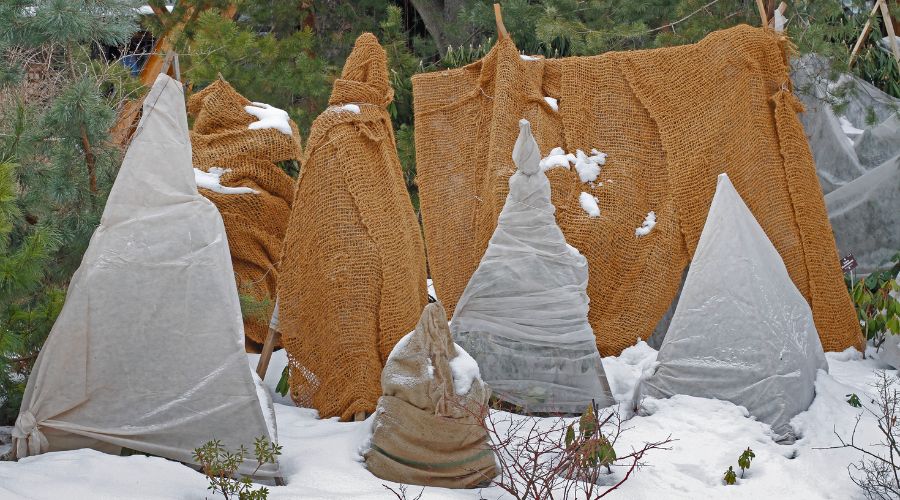
Keep heat-sensitive plants cool
Plant heat-sensitive plants in cooler spots that have lots of air circulation, water, shade, and aren’t near any reflective walls or structures.
Add mulch. Mulch and/or compost not only keep roots warm in the winter, but they also keep them cooler in the summer.
Care for the health and longevity of your plants
Plants with established root systems are more likely to survive extreme temperatures or other stressors, so planting and helping them get established during warm seasons can help.
The same goes for healthy plants. A plant that has enough water and nutrition and is not plagued by pests or diseases is much more likely to survive in a climate outside of its ideal planting zone.
We don’t recommend fertilizing during cool seasons, however, as this can encourage rapid growth in plants that need to store their energy to survive the colder months. New growth is also more easily killed by the cold, which can stress out the entire plant.
How does Landscape Design Impact Zone-Pushing?
Understanding the microclimates on your property is an important step in choosing the right plants for your yard. In some instances, you can also use your landscape’s design to create microclimates.
Planting shade trees or windbreaks, for example, can lower summer temperatures or prevent some winter desiccation. Water features, fences, raised garden beds, berms, and walkways can all be used not only to enhance the beauty of your property, but to create microclimates in which specific plants will thrive.
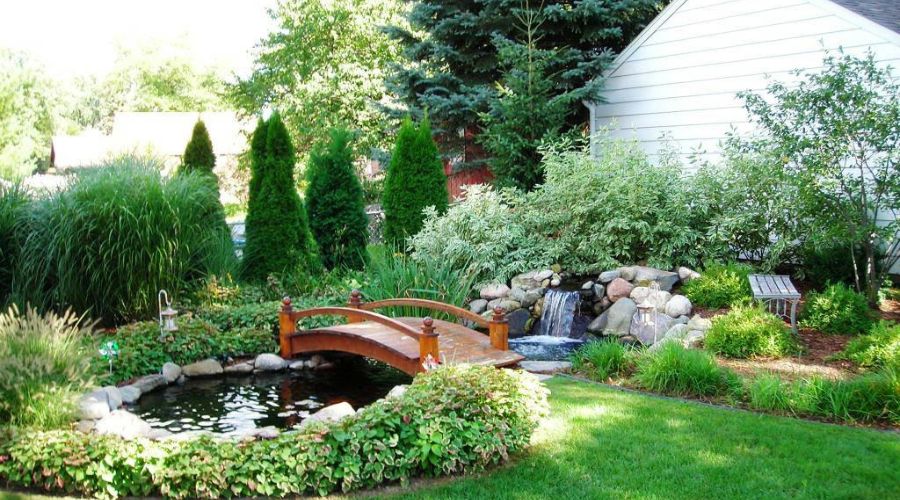
Bay Landscaping Can Help!
If figuring out and implementing microclimates on your property sounds overwhelming to you, the landscape design professionals at Bay Landscaping are ready to assist you.
We can help you determine the best trees, shrubs, and plants for your property, and can also implement hardscaping elements to help create microclimates.
Whether you want to experiment with pushing beyond Michigan planting zone or you just want the best chance of survival for your landscape, contact Bay Landscaping today to discuss your options.
If you want to try zone-pushing on your own, visit Bay Landscaping’s Nursery and ask about our selection of plants that may need a little extra care to grow in the Great Lakes Bay region.
